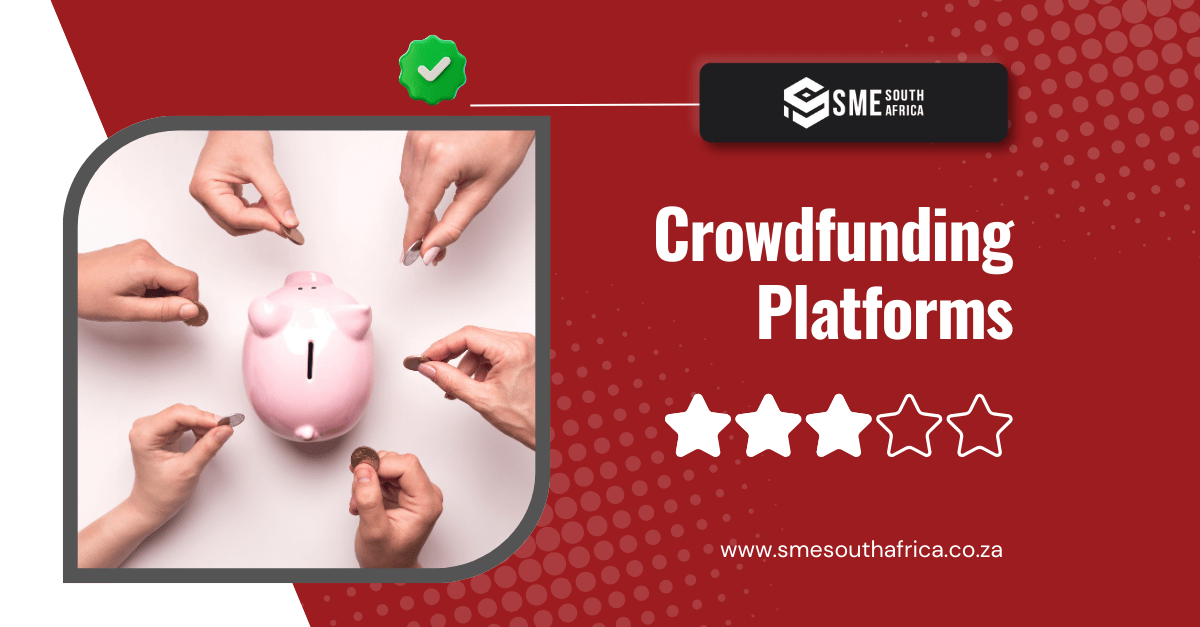
Crowdfunding isn’t just about raising capital, it’s about validating your idea, building your tribe, and learning how to sell before you even have a finished product.
If you’re serious about building a sustainable business, you need to treat crowdfunding with the same discipline and insight you’d use to attract a private investor or bank loan.
In this article, we break down 6 practical crowdfunding strategies for South African entrepreneurs who are ready to scale with purpose.
1. Choose the Right Platform for Your Business
Let’s start with finding the right platform. There are various crowdfunding platforms, and not all crowdfunding sites are suitable for South African SMEs. Platforms like Thundafund, BackaBuddy, and Jumpstarter cater to local projects and offer a South African payment infrastructure.
To find the right platform, give yourself time to explore and understand each platform. If you’re raising funds for a community initiative or social enterprise, BackaBuddy could be ideal. Tech startups or creative ventures might get better visibility on Indiegogo, but be mindful of currency conversion, fees, and platform requirements.
While international crowdfunding platforms can be useful, local platforms might be your best bet because funders don’t want to navigate foreign exchange issues. Match your platform not just to your product, but also to your audience’s habits.
2. Build a Pre-Launch Audience
Don’t wait until your crowdfunding campaign is live to start marketing. Crowdfunding is about momentum. The more support you gain early on, the more likely your campaign is to go viral or reach its funding goals.
Start building your list weeks or even months before your campaign goes live. Use e-mail newsletters, WhatsApp groups, social media content, and even local events to generate buzz. Offer sneak peeks, behind-the-scenes content, or limited early-bird rewards to build excitement.
It’s also important to remember that funders rarely fund your idea unless they see others backing it first. With crowdfunding, the initial support will most likely come from your own network.
3. Craft a Compelling Story
People don’t merely fund products, they fund real people who have real stories. Your campaign pitch should clearly explain what your business does, but more importantly, why it matters.
Use storytelling to connect emotionally. Share your origin story, the problem you’re solving, and the impact your business hopes to make. Include high-quality images and a professional video if possible.
In South Africa, where personal connection and community matter, authenticity is a major advantage. Be clear, passionate, and honest. A transparent story builds trust, and trust drives funding.
4. Set Realistic Funding Goals
Your funding goal shouldn’t just be what you want, it should reflect what you need and what you can realistically raise from your audience. To set realistic crowdfunding goals, aim for smaller, achievable targets, as that’s often more effective than an ambitious, all-or-nothing figure.
Break down your funding target: How much will go into production? Marketing? Logistics? Be transparent with your budget so that funders understand exactly where their money is going.
It’s important that you know the rules of your platform. Some platforms use an “all-or-nothing” system, which means you only receive the funds if you reach your target. Others let you keep what you raise, regardless.
5. Promote Aggressively and Consistently
Thumbsucking your launch doesn’t work. You need a full promotional plan, and you need to be intentional about building a viral marketing strategy. Take advantage of all your channels, email, WhatsApp, Instagram, Facebook, LinkedIn, and even community radio or newspapers.
Don’t be minimal in your posting; create a calendar of posts, stories, live videos, testimonials, countdowns, and updates. Celebrate every funding milestone publicly.
In South Africa, where networks are often hyperlocal, don’t underestimate word-of-mouth and personal endorsements. Ask your backers to share your campaign within their circles.
6. Keep Your Supporters Engaged Even After the Campaign
Funding is only the beginning. What you do after your campaign builds long-term trust and future opportunities.
Send regular updates to your backers. Share your progress, challenges, production timelines, and delivery plans. If there are delays, be upfront. A loyal backer community can become your repeat customers, brand ambassadors, or even investors.
Also, consider how you’ll transition your campaign supporters into your broader business funnel. Add them to your newsletter list, invite them to future events, and continue engaging them beyond the campaign.



















